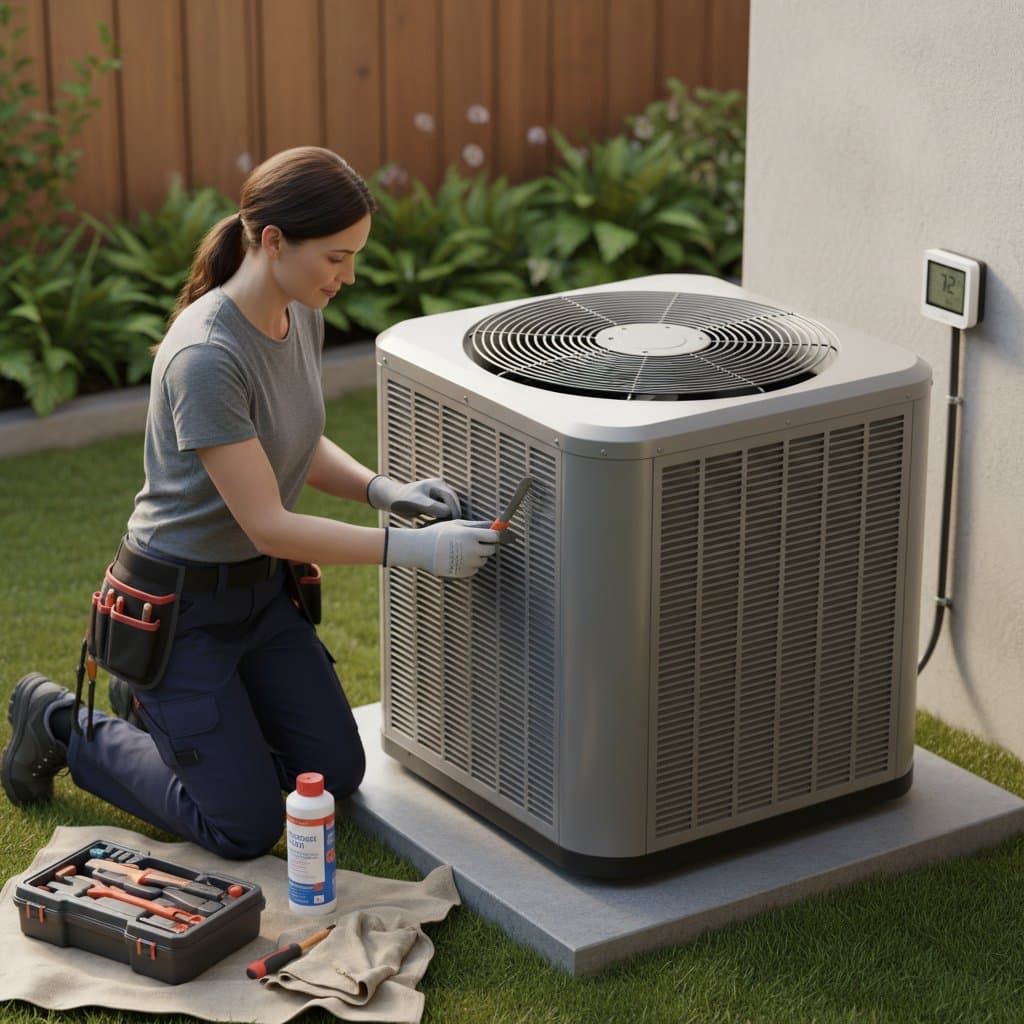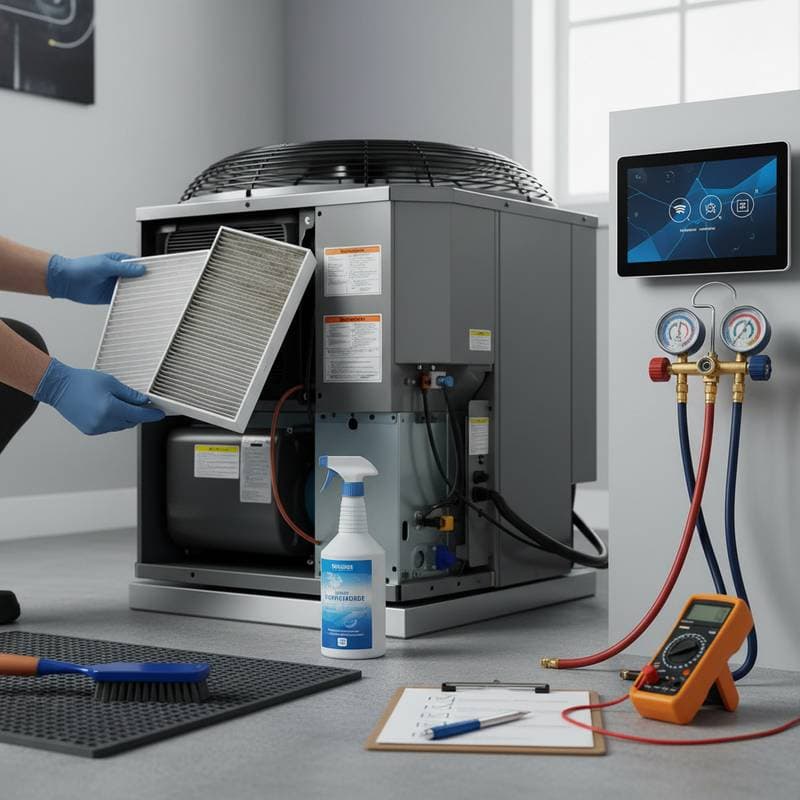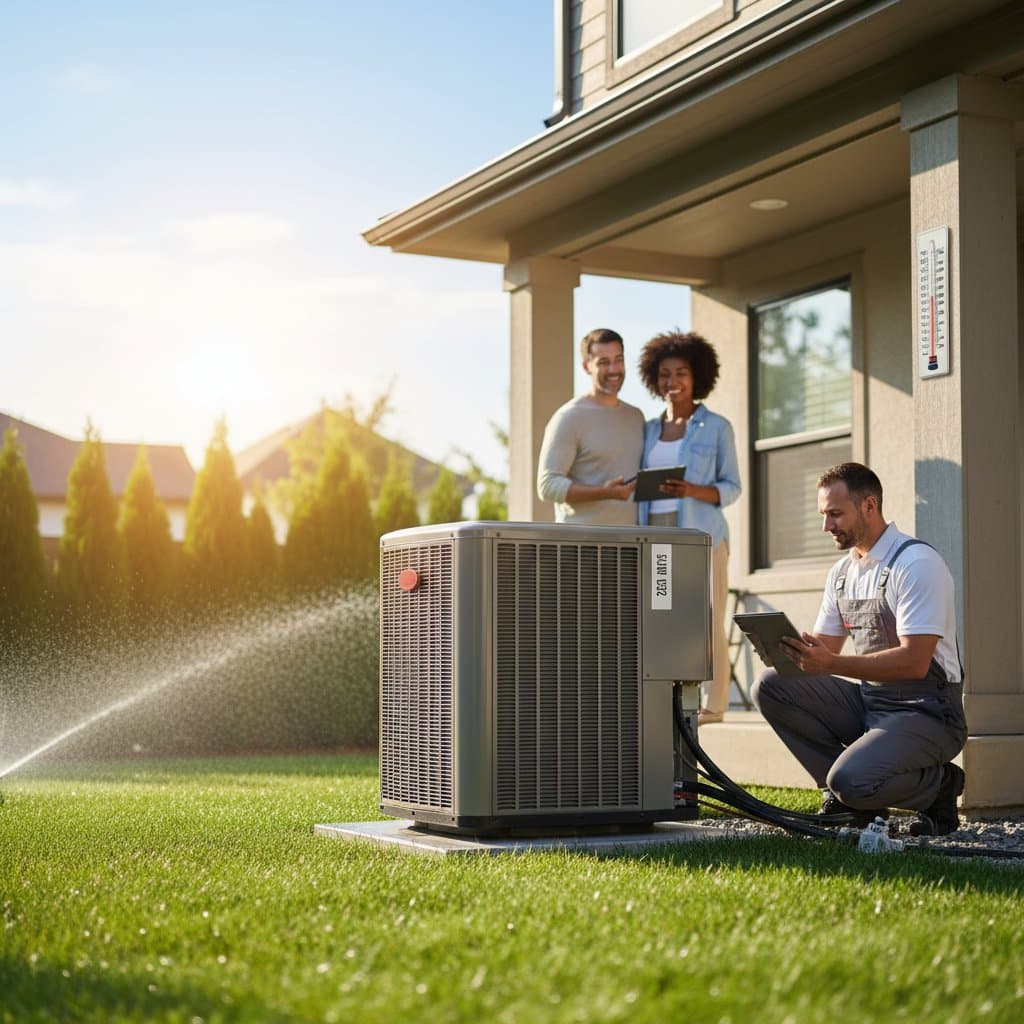Prepare Your AC Early to Prevent Summer Failures
Air conditioners face intense demands as temperatures climb. Regular maintenance before peak heat arrives wards off expensive breakdowns, boosts energy efficiency, and prolongs system longevity. Early preparation serves as both a comfort measure and a financial safeguard. Neglecting seasonal tune-ups often results in surprise repair expenses precisely when cooling proves essential.
This guide outlines steps to ready your air conditioner for demanding use, typical maintenance expenses, and methods to select an appropriate service plan for your residence.
Core Elements of Air Conditioner Maintenance Costs
AC tune-up expenses fluctuate based on location, equipment type, and service depth. Across the nation, a standard maintenance visit averages between $80 and $200. In major cities, fees may climb to $250 or higher owing to elevated labor rates. Residents in rural or smaller communities frequently encounter rates near $70.
Seasonal factors influence costs as well. HVAC firms typically increase charges during high-demand summer periods, whereas spring and early fall often bring promotional discounts or combined packages. Broader economic elements, such as fuel expenses, technician supply, and component prices, also play a role. For instance, escalating energy rates or refrigerant shortages commonly elevate maintenance fees industry-wide.
Common Pricing Approaches
Hourly Billing Compared to Fixed Rates
Certain HVAC specialists bill hourly, ranging from $75 to $150 per hour. This approach suits diagnostics or repairs primarily. Numerous homeowners favor fixed-rate tune-ups, which encompass inspection, cleaning, and minor adjustments for $100 to $200.
Unit-Specific or Project-Oriented Fees
In homes with multiple units or expansive properties, providers quote per-unit charges. Additional systems generally cost 60 to 80 percent of the initial unit's fee. Project-based structures incorporate all labor and supplies, simplifying financial planning.
Bundled Package Options
Providers commonly pair AC maintenance with furnace or heat pump evaluations. Such combinations yield savings of 15 to 25 percent over individual bookings. Certain firms incorporate filter changes or duct assessments into seasonal deals.
Annual Contracts Versus Single Visits
Yearly maintenance agreements, often termed comfort clubs, span $150 to $400 annually. These typically cover two appointments, expedited bookings, and repair reductions. Individuals seeking adaptability may opt for isolated tune-ups, though ongoing plans minimize emergency risks.
Service Levels and Associated Costs
Fundamental or Basic Options
Essential tune-ups involve visual checks, airflow assessments, thermostat verification, and coil wiping. These services range from $80 to $120. They fit well for recent or newer installations.
Mid-Level or Standard Packages
Intermediate services, priced at $120 to $180, add electrical inspections, refrigerant level checks, and fan adjustments. This tier offers optimal balance for most households seeking thorough yet affordable care.
Advanced or Full-Spectrum Services
In-depth packages command $200 to $350. They feature intensive coil cleaning, duct pressure evaluations, and overall system tuning. Higher-end options might encompass filter swaps, drain clearing, and prolonged diagnostics.
Tailored or Specialized Interventions
Bespoke tasks like smart thermostat setup, refrigerant leak identification, or efficiency optimizations for advanced units add $100 to $300. Owners of aging equipment or intricate zoning configurations benefit most from these targeted efforts.
Factors That Shape AC Maintenance Expenses
System Scale and Coverage
Expansive residences with zoned setups demand extended time and resources. Technicians must examine various air handlers, thereby increasing labor outlays.
Equipment Sophistication and Expertise Demands
Contemporary units featuring variable-speed operations or superior filtration require niche knowledge. Providers holding NATE or EPA certifications command modest premiums, yet their proficiency enhances output and curbs future expenditures.
Duration of the Service
Routine tune-ups last one to two hours. Elaborate procedures, including thorough coil sanitation or duct analysis, may stretch to three hours or beyond, inflating the total cost.
Supplies and Tools Involved
Items like replacement filters, refrigerant charges, or drain treatments contribute to the invoice. Premium filters and sustainable refrigerants carry higher prices but elevate air purity and lessen ecological footprint.
Optional Services and Extra Fees
Costs for Filter Changes
Standard filters run $10 to $40, varying by dimensions and grade. Advanced HEPA variants can exceed $60. Professionals handle replacements amid tune-ups, sparing homeowners from uncertainty.
Expenses for Coil and Condenser Care
Accumulated grime on coils diminishes efficiency by as much as 30 percent. Expert cleaning of these components costs $75 to $150, influenced by access and residue levels.
Fees for Duct Evaluations
Introductory duct checks append $100 to the bill. Early detection of breaches averts energy loss and promotes uniform cooling distribution.
Charges for Urgent or After-Hours Response
Off-schedule emergency visits tack on $100 to $200. Maintenance contracts frequently eliminate these penalties, appealing to those desiring assured availability amid heat surges.
Professional Perspectives and Sector Standards
HVAC expert Daniel Ruiz, a licensed professional with more than 20 years in the field, notes that the majority of urgent AC failures he addresses stem from avoidable issues. He attributes 70 percent of no-cool emergencies to blocked filters, diminished refrigerant, or soiled coils. Preseason checkups, according to him, avert such disruptions and stabilize utility expenses.
The Home Energy Research Council, a consumer-focused organization, indicates that regular AC servicing yields average seasonal cooling savings of 15 percent. Their findings further reveal that tended systems endure five to ten years beyond those lacking care.
Selecting an Ideal Maintenance Strategy
Evaluate providers by their pricing clarity and detailed service outlines. Established firms often display inspection criteria on their sites, facilitating comparisons. A robust protocol covers thermostat tuning, refrigerant verification, electrical safeguards, drain sanitation, filter installation, and airflow gauging.
Inquire regarding staff qualifications and liability protections. Certified, insured operators safeguard properties and equipment alike. Select firms extending performance assurances, such as complimentary follow-ups for prompt post-service malfunctions.
Practical Advice for Effective Tune-Ups
- Book appointments in spring for reduced rates and availability.
- Swap filters every one to three months to sustain airflow and ease motor stress.
- Remove obstructions from the exterior unit, maintaining at least two feet clearance for airflow.
- Examine refrigerant line insulation for damage, as flaws impair performance.
- Monitor for odd sounds like clicks, hums, or rattles signaling potential electrical or mechanical faults.
Implement Your AC Preparation Plan
Initiating AC care promptly guarantees reliable cooling, optimal performance, and durability amid rising heat. Maintained units activate quicker, draw less electricity, and persist longer. Opt for either a solitary service or yearly commitment; the essence lies in steady upkeep.
Reach out to a vetted local HVAC provider, solicit a comprehensive service summary, and secure a slot prior to seasonal rushes. This modest upfront commitment yields substantial returns through diminished bills and averted crises as summer intensifies.





